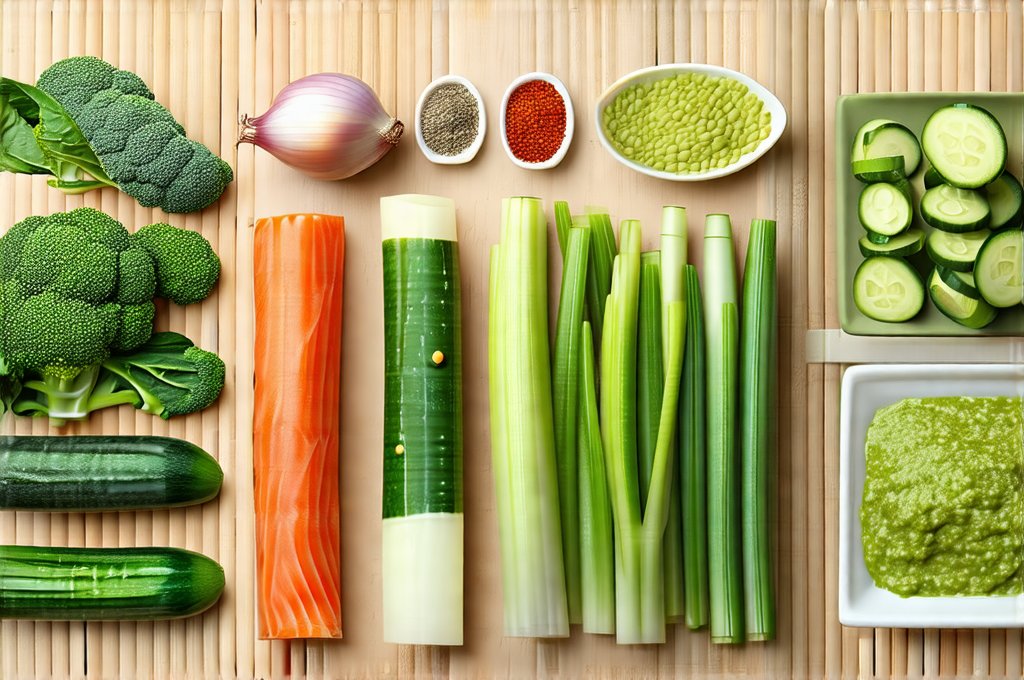Many plant-based eaters experience digestive discomfort – bloating, gas, cramping – after enjoying perfectly healthy meals. Often, this isn’t due to an allergy or intolerance to plants themselves, but rather to the fermentable carbohydrates present in many plant foods. These carbs, collectively known as FODMAPs (Fermentable Oligosaccharides, Disaccharides, Monosaccharides And Polyols), aren’t digested properly in the small intestine and instead reach the large intestine where bacteria feast on them, producing gas as a byproduct. Understanding how to navigate this can unlock a much more comfortable and enjoyable plant-based journey, allowing individuals to reap all the nutritional benefits without the unpleasant side effects. It’s important to remember that fermentation is natural – it’s what happens during sourdough bread making or kimchi creation! The issue isn’t fermentation itself, but excessive fermentation within our digestive systems causing discomfort.
This article will explore strategies for minimizing fermentative digestion when following a plant-based diet. We won’t be advocating elimination diets (although these can sometimes be helpful under professional guidance), but rather focusing on ingredient choices and preparation methods that naturally reduce the potential for bloating and gas. The goal is to empower plant-based eaters with knowledge, enabling them to build comfortable, nourishing dietary patterns without feeling limited or restricted. We’ll look at specific ingredients known to contribute to fermentation, as well as alternatives and techniques for making existing foods more digestible. This is about finding balance and tailoring your diet to your unique digestive needs – because everyone’s gut microbiome is different! Considering how plant-based diets impact sensitive guts can be a great starting point.
Reducing Fermentable Carbohydrates in Plant-Based Cooking
Many plant-based staples contain significant amounts of FODMAPs or other fermentable carbohydrates. Legumes, for example (beans, lentils, chickpeas), are nutritional powerhouses but notorious for causing gas due to their oligosaccharides. Cruciferous vegetables – broccoli, cauliflower, cabbage, Brussels sprouts – also fall into this category, as do fruits like apples, pears, and mangoes. Even seemingly benign foods like onions and garlic can be problematic for some. The key isn’t necessarily avoiding these foods altogether (although that’s an option), but understanding how to modify them or balance them with other ingredients to lessen their impact on digestion. Preparation is paramount.
One effective strategy involves soaking legumes extensively before cooking, then discarding the soaking water and rinsing thoroughly. This process removes many of the oligosaccharides responsible for gas production. Additionally, combining legumes with a strip of kombu seaweed during cooking can significantly improve digestibility – kombu contains enzymes that help break down these complex carbohydrates. For cruciferous vegetables, steaming or lightly sautéing them tends to be more digestible than eating them raw. Furthermore, portion control plays a role; smaller servings are less likely to overwhelm the digestive system. If you struggle with reflux, cooking at home can provide more control over ingredients and preparation methods.
Finally, consider incorporating herbs and spices known to aid digestion. Ginger, peppermint, chamomile, and fennel seed can all help soothe the gut and reduce bloating. These aren’t magical cures but valuable additions to your culinary arsenal. Remember that individual tolerance varies widely – what bothers one person may not bother another. It’s about experimenting and paying attention to how your body responds.
Ingredient Swaps & Alternatives
Fortunately, a vast array of delicious and nutritious plant-based foods are naturally low in fermentable carbohydrates. Focusing on these can offer significant relief for those experiencing digestive discomfort. Sweet potatoes, carrots, spinach, zucchini, bell peppers, and berries are all generally well-tolerated options. Rice (especially basmati), quinoa, oats (in moderation), and gluten-free grains provide carbohydrate sources without the same level of fermentation potential as wheat or rye. Diversifying your diet is crucial – don’t rely on just a few low-FODMAP foods, as this can lead to nutritional deficiencies.
When it comes to flavoring, garlic and onion are frequently culprits for digestive upset. Alternatives include asafoetida (hing), which provides a similar savory flavor without the FODMAPs, or green parts of scallions/spring onions used sparingly. Herbs like chives, basil, rosemary, and thyme offer robust flavors that won’t cause bloating. Similarly, replacing applesauce with peeled peaches or blueberries in baking can reduce fermentability. The goal isn’t to eliminate flavor but to find alternatives that work for your digestive system without sacrificing enjoyment. Remember to read labels carefully on pre-made plant-based products, as many contain hidden ingredients like high fructose corn syrup or inulin (a prebiotic fiber that can be fermentable). You may also want to check out best smoothie ingredients for gentle options.
Managing Legume Intolerance
Legumes are a cornerstone of many plant-based diets, providing protein, fiber, and essential nutrients. However, their reputation for causing gas often deters people from incorporating them regularly. As mentioned earlier, thorough soaking is a key step, but there’s more you can do. Sprouting legumes – allowing them to germinate before cooking – further reduces oligosaccharide content and makes them even easier to digest. This involves soaking the legumes for 8-12 hours, then rinsing them daily with fresh water for several days until small sprouts appear.
Another effective technique is pressure cooking. The high heat and pressure break down complex carbohydrates more efficiently than conventional boiling or simmering. Adding a bay leaf or a piece of kombu during cooking can also aid digestion. Starting with smaller portions and gradually increasing intake allows your gut microbiome to adapt, potentially improving tolerance over time. Listen to your body – if legumes consistently cause discomfort even after implementing these strategies, consider reducing your consumption or exploring alternative protein sources like tofu, tempeh, or seitan (if gluten isn’t an issue). For those on a GERD diet, plant-based proteins can be particularly beneficial.
The Role of Fiber & Prebiotics
Fiber is essential for gut health and overall well-being. However, some types of fiber can contribute to fermentation. Soluble fiber, found in foods like oats, apples, and beans, absorbs water and forms a gel-like substance in the digestive tract, which can lead to gas production if consumed in excess. Insoluble fiber, found in whole grains and vegetables, adds bulk to stool and promotes regularity but is generally less fermentable. The key is finding a balance.
Prebiotics – non-digestible fibers that feed beneficial gut bacteria – are also important for digestive health, but can sometimes exacerbate symptoms in sensitive individuals. Foods like onions, garlic, leeks, asparagus, and bananas are rich in prebiotics. If you’re experiencing bloating or gas, consider reducing your intake of these foods temporarily to see if it helps. Gradually reintroducing them while monitoring your body’s response is a good approach. A healthy gut microbiome thrives on diversity, so don’t eliminate prebiotics entirely; simply adjust your consumption based on your individual needs.
Understanding Food Combining Principles
Food combining is a dietary approach that suggests certain food combinations are easier to digest than others. While not scientifically proven for everyone, it can be helpful for some individuals struggling with digestive discomfort. The core principle revolves around avoiding the simultaneous digestion of foods requiring different enzymatic processes. For example, combining high-fat foods with simple carbohydrates may slow down digestion and increase fermentation.
A common recommendation is to avoid combining large amounts of fruit with meals – eating fruit on an empty stomach allows it to digest more quickly without being held up by other foods. Similarly, separating protein sources from starch sources can improve digestibility for some people. This isn’t a rigid rule, but rather a potential strategy for those experimenting with different approaches to manage digestive issues. It’s crucial to remember that these principles are highly individual and may not work for everyone. Experimentation and self-observation are key to determining what works best for your body. If you have picky eaters, creating a tummy-friendly diet can be a challenge but very rewarding.


















